Last Updated on 4 months by Francis
Wally remotes, also known as Wally remote controls, are devices used to control Dish Wally receivers. If you’re wondering whether these remotes use infrared technology, you’re not alone. While official documentation is scarce, user discussions on forums suggest that Wally remotes do, in fact, use infrared signals to communicate with the receiver.
Contents
Key Takeaways:
- Wally remotes are believed to use infrared technology for communication with Dish Wally Receivers.
- User discussions on forums provide insights into the technology used in Wally remotes.
- No official documentation is available regarding the technology used in Wally remotes.
- Troubleshooting techniques can help resolve issues with Wally remote functionality.
- Compatibility and programming instructions should be considered when using or replacing Wally remotes.
Locating the IR sensor on the Wally Receiver
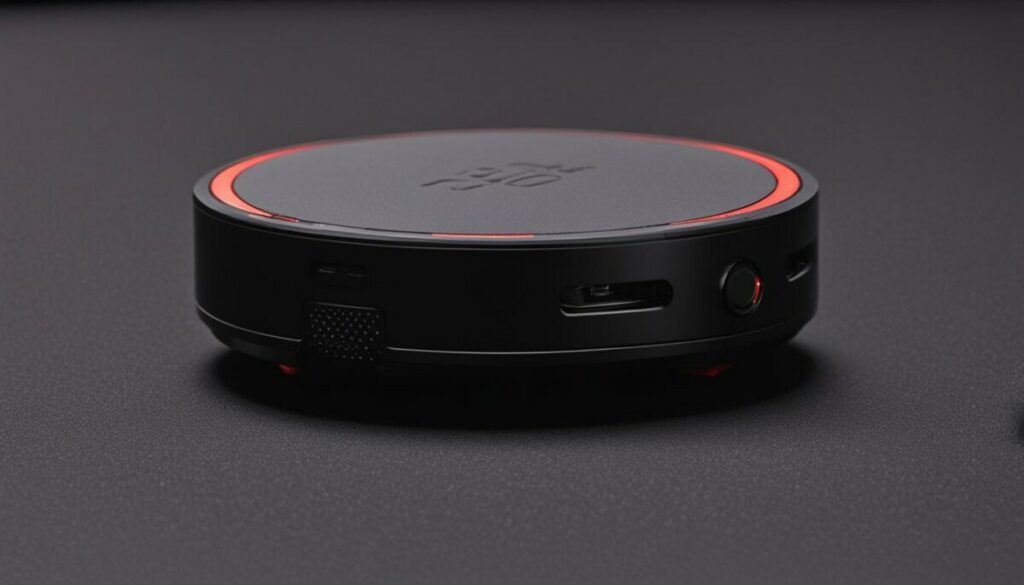
Many installers and users have reported difficulties in locating the IR sensor on the Dish Wally Receiver. One user on Remote Central shared a link to a product photo that shows the front panel of a similar Wally Receiver. Another user suggested using a pocket flashlight to “x-ray” the front panel inch by inch to spot the IR sensor. It was also mentioned that some manufacturers, like Sony and Samsung, may place the sensor in unexpected places such as within the logo or power button. Suggestions were made to systematically block areas using a business card or to relocate the emitter while sending commands to locate the sensor accurately.
| Common locations for IR sensor: | Tips to locate the IR sensor: |
|---|---|
| Front panel near the logo or power button | Systemically block areas using a business card |
| On the side panel | Relocate the emitter while sending commands |
| Behind a small, discreet cutout | Use a pocket flashlight to “x-ray” the front panel inch by inch |
Troubleshooting Wally Remote Functionality
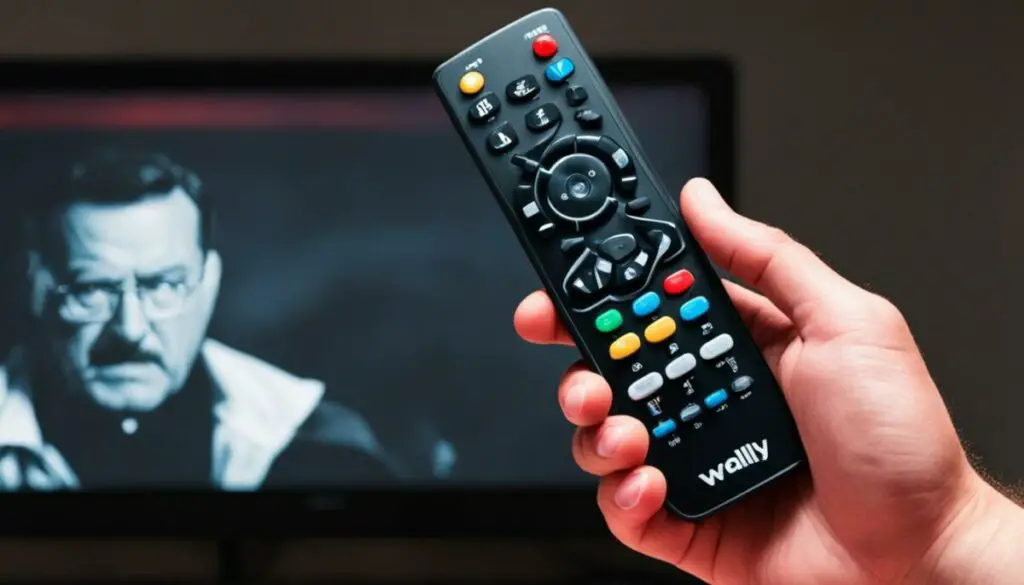
Some users have reported issues with the functionality of their Wally remote controls. Troubleshooting techniques mentioned on forums like Remote Central and Satellite Guys include adjusting the position of the infrared emitter while sending commands to determine if there is a response from the Wally Receiver.
“The effectiveness of the emitter can vary depending on the location, indicating that the IR sensor might be in a specific area on the front panel of the receiver,” said one user on Satellite Guys.
Users have suggested using black electrical tape to limit emission angles and improve the accuracy of locating the sensor. This technique can help ensure that the infrared signal is directed towards the IR sensor, maximizing the chances of successful communication between the remote and the receiver.
Opening the Wally Receiver for Troubleshooting
For advanced troubleshooting, some users have discussed the possibility of opening the Wally Receiver to see the exact location of the IR sensor and eliminate any guesswork. However, it is important to note that opening the receiver may void any warranty or support from the manufacturer. If considering this option, it is advisable to seek professional assistance or guidance.
In summary, troubleshooting Wally remote functionality involves adjusting the position of the infrared emitter, using black electrical tape to optimize the emission angles, and potentially opening the Wally Receiver if necessary. These troubleshooting techniques can help resolve issues and improve the overall performance of Wally remotes.
| Common Wally Remote Issues | Troubleshooting Steps |
|---|---|
| Unresponsive buttons | Check batteries Ensure clear line of sight between remote and receiver Reprogram remote if necessary |
| Intermittent function | Check batteries Reposition emitter for better signal transmission Check for physical obstructions |
| Difficulty in pairing with the Wally Receiver | Ensure correct pairing process Reset remote and receiver if needed Contact Dish Network support for assistance |
Compatibility of Wally Remotes
When it comes to using Wally remotes with Dish Wally Receivers, compatibility is a crucial factor to consider. While official documentation on this topic is limited, it is reasonable to assume that Wally remotes are specifically designed to work seamlessly with Wally Receivers. However, it’s important to note that compatibility issues may arise if you try to use Wally remotes with other devices or older Dish receivers. To ensure a smooth experience, we recommend referring to the manufacturer’s guidelines or reaching out to their support team for specific compatibility information.
Programming and Using Wally Remotes
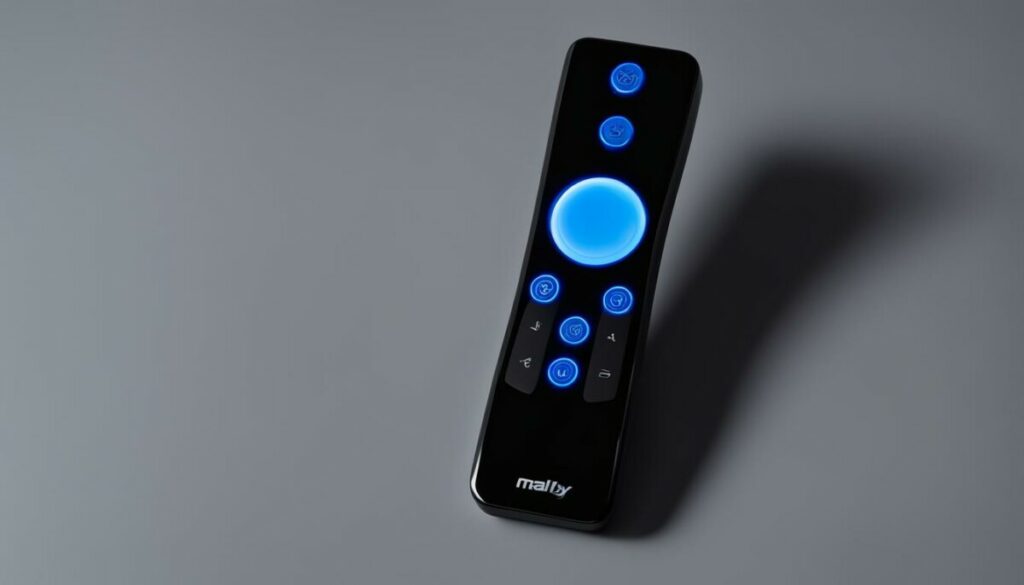
Programming and using Wally remotes is a simple and intuitive process. While the specific steps may vary depending on the model and setup, the general procedure involves syncing the remote with the Wally Receiver using a unique pairing code. To ensure a smooth experience, users can refer to the user manual or online resources for detailed instructions on programming and using Wally remotes.
Once programmed, Wally remotes provide effortless control over various functions of the Wally Receiver. The remote control’s buttons enable users to change channels, adjust volume, and navigate menus with ease. Whether you’re channel surfing or accessing your favorite program, the Wally remote puts the power in your hands.
For those who desire a more advanced setup, Wally remotes offer additional programming options. With a little extra configuration, users can control other devices in their home theater system, creating a seamless entertainment experience. Whether it’s dimming the lights or adjusting the audio, the Wally remote empowers users to take control of their entire setup.
To get started with programming and using your Wally remote, follow these steps:
- Retrieve the user manual or access online programming guides for your specific Wally remote model.
- Find the unique pairing code required for syncing the remote with your Wally Receiver.
- Follow the instructions provided in the manual or online resources to enter the pairing code and establish a connection between the remote and receiver.
- Once successfully paired, the Wally remote is ready to use.
- Experiment with the different buttons and functions to familiarize yourself with the remote’s capabilities.
- Enjoy the convenience and control that the Wally remote brings to your TV viewing experience.
Remember to keep the user manual or online programming guides handy for future reference. Whether you need a quick reminder or want to explore advanced features, these resources will be invaluable in maximizing your Wally remote’s potential.
Be sure to consult the manufacturer’s guidelines for any specific instructions or troubleshooting tips that may pertain to your model of Wally remote. If you encounter any issues during programming or usage, refer to the troubleshooting section of the user manual or seek assistance from the manufacturer’s support team.
Programming and using Wally remotes is a user-friendly endeavor that enhances your overall viewing experience. Take advantage of the convenience and functionality that Wally remotes offer, and elevate your control over your entertainment.
Troubleshooting Common Wally Remote Issues

Wally remotes, like any electronic device, may encounter occasional issues. Users have reported common problems such as unresponsive buttons, intermittent function, or difficulty in pairing with the Wally Receiver. Fortunately, there are troubleshooting steps that can be taken to resolve these issues.
If you are experiencing problems with your Wally remote, here are some helpful troubleshooting tips:
- Check the batteries: Ensure that the batteries in your remote control are properly inserted and have sufficient charge. Replace the batteries if necessary.
- Clear line of sight: Make sure there are no obstructions between the Wally remote and the Wally Receiver. Infrared signals require a direct line of sight to function correctly.
- Reprogramming the remote: Sometimes, reprogramming the remote can help resolve any communication issues. Follow the user manual or online resources for instructions on how to reprogram your Wally remote.
- Check for physical obstructions: Look for any objects or obstacles that may be blocking the infrared signal between the remote and the receiver. Ensure a clear path for the signal to reach the receiver.
If you have tried these troubleshooting steps and the issues with your Wally remote persist, it may be helpful to contact Dish Network support for further assistance. They can provide additional troubleshooting guidance or advise on potential solutions. In some cases, it may be necessary to consider replacing your Wally remote.
Note: The image above is for illustrative purposes only and may not represent the exact Wally remote model.
Replacement Options for Wally Remotes
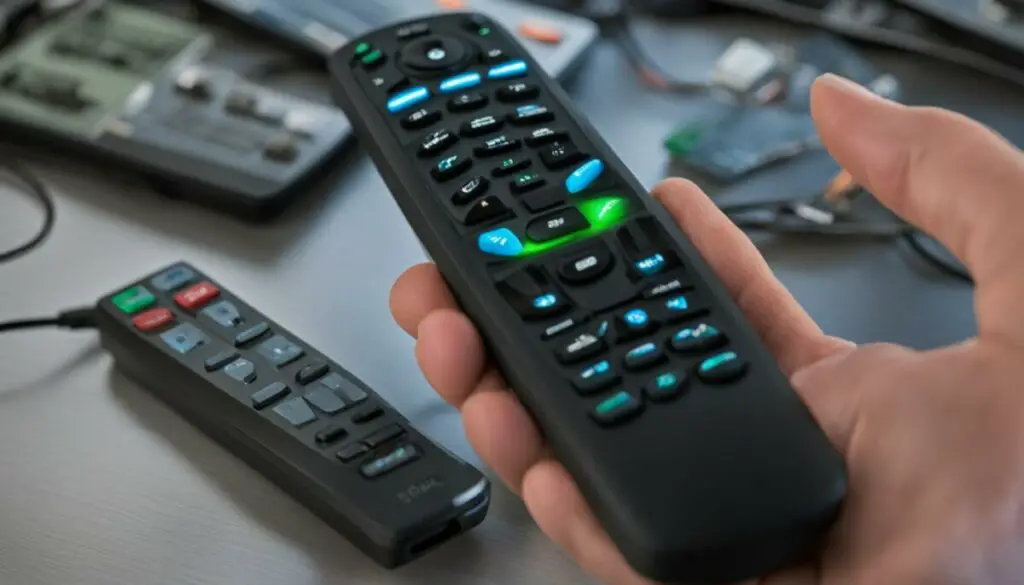
If you find yourself in a situation where your Wally remote is lost, damaged, or no longer functional, there are replacement options available to get you back in control.
Purchase a Replacement Remote:
You can directly purchase a replacement remote control from Dish Network or authorized retailers. Make sure to choose a remote that is compatible with the specific model of your Wally Receiver. This ensures seamless functionality and a hassle-free user experience.
Consider Universal Remote Controls:
In addition to purchasing a replacement remote from Dish Network, you also have the option of using universal remote controls that support Dish Network receivers. These universal remotes may be compatible with Wally Receivers as well, providing you with more choices when it comes to finding a suitable replacement. However, it is important to check the compatibility and programming instructions before making a purchase.
| Replacement Option | Pros | Cons |
|---|---|---|
| Purchase a Replacement Remote |
|
|
| Universal Remote Controls |
|
|
Whether you choose to purchase a replacement remote or opt for a universal remote, ensuring compatibility and ease of use are paramount. Consider your specific needs and preferences before making a decision. With the right replacement remote, you can continue to enjoy seamless control over your Dish Wally Receiver.
Exploring Wally Remote Technology
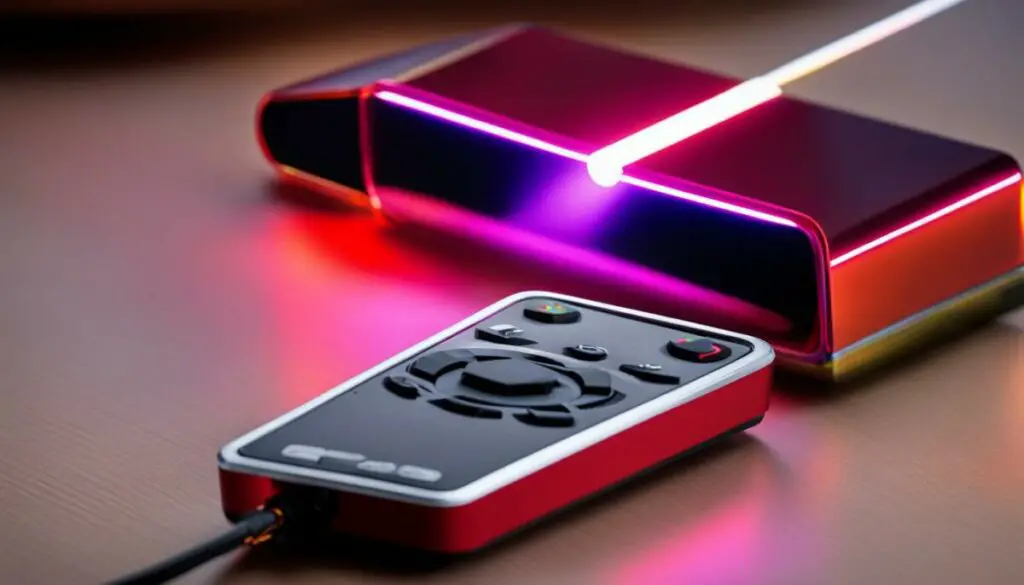
While official documentation regarding the technology used in Wally remotes is limited, it is reasonable to assume that they utilize infrared technology for communication with the Wally Receiver. Infrared remotes have been a popular choice for consumer electronic devices for many years due to their simplicity, reliability, and compatibility. Infrared signals are used to transmit commands from the remote control to the receiver, allowing users to control various functions of the Wally Receiver from a distance. The use of infrared technology in remote controls has become standard in the industry.
One of the key advantages of infrared remote control technology is its widespread compatibility. Most consumer electronic devices, including TVs, DVD players, and sound systems, are designed to receive and respond to infrared signals from a remote control. This allows users to operate multiple devices using a single remote control, providing convenience and reducing clutter.
Infrared remotes function by emitting infrared light pulses that correspond to specific commands. These light pulses are then received by an infrared sensor on the target device, which interprets the pulse and executes the corresponding action. The simplicity and reliability of this technology have made it a staple in the remote control industry.
“Infrared remotes have been a reliable and versatile technology for controlling various electronic devices from a distance. Their compatibility with a wide range of products makes them a popular choice for consumers.”
Additionally, infrared remote controls are known for their ease of use. The intuitive layout of buttons and straightforward functionality allow users to navigate menus, adjust settings, and perform various operations with minimal effort. The lack of complex programming or setup requirements makes infrared remotes accessible to users of all levels of technical expertise.
In conclusion, Wally remotes likely rely on infrared technology for communication with the Wally Receiver. This proven and widely adopted technology offers simplicity, reliability, and compatibility, making it a popular choice for remote control devices.
The Evolution of Remote Control Design
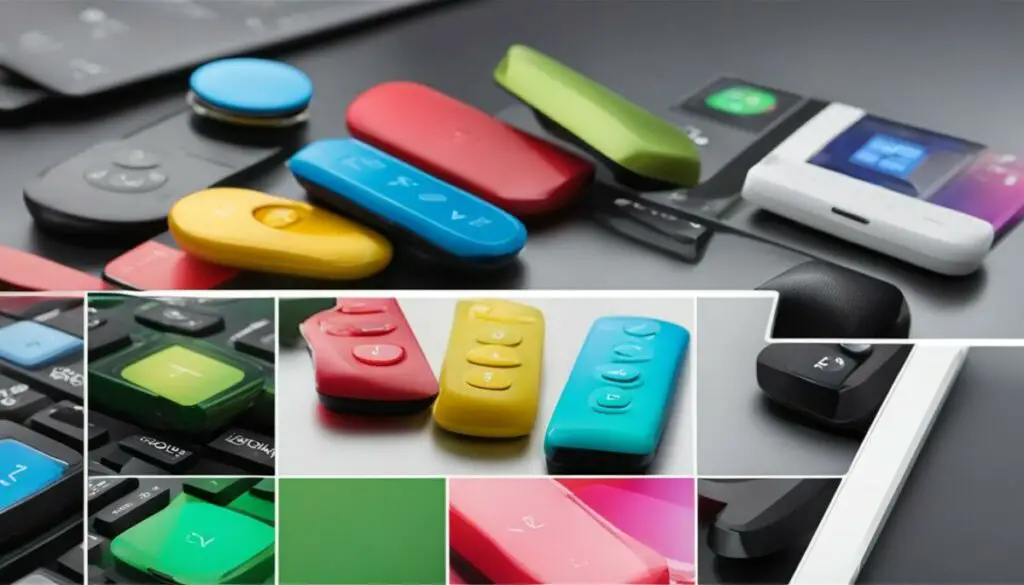
Remote control design has come a long way through the years, with numerous advancements and innovations shaping the devices we use today. Let’s take a journey through the evolutions in remote control design.
1. Early Wireless Remotes
Early wireless remote controls played a pivotal role in paving the way for future innovations. Notable examples include the Philco Mystery Control and Zenith Flash-Matic remotes, which introduced consumers to the convenience of controlling their electronic devices without physical contact.
2. Ultrasonic Commands
Zenith made another significant breakthrough in remote control design with the introduction of ultrasonic commands. This technology allowed users to control their devices using high-frequency sound waves, providing a more reliable and accurate method of remote control interaction.
3. Intuitive Use
Bang & Olufsen, renowned for their focus on design and usability, brought a fresh perspective to remote control functionality. They placed emphasis on intuitive use, creating remotes that were not only aesthetically pleasing but also easy and enjoyable to use.
4. The Emergence of Universal Remotes
In the 1970s, the term “universal remote” emerged to describe remote controls that could control multiple electronic devices using wired connections. This allowed users to streamline their remote control collection and simplify the control of various devices.
5. Wireless Infrared Technology
In the 1980s, Acoustic Research and Philips pioneered the concept of a universal remote control with wireless infrared technology. This breakthrough allowed users to control their devices without the need for physical connections, offering enhanced convenience and flexibility.
6. Modern Universal Remote Controls
Taking inspiration from the earlier innovations, modern universal remote controls have evolved to be compact, feature-rich, and compatible with a wide range of devices. They offer advanced programming options and intuitive user interfaces, providing users with a seamless and immersive control experience.
| Period | Key Innovations |
|---|---|
| Early Wireless Remotes | Philco Mystery Control, Zenith Flash-Matic |
| Ultrasonic Commands | Zenith introduces ultrasonic technology |
| Intuitive Use | Bang & Olufsen focuses on user-friendly design |
| The Emergence of Universal Remotes | Control multiple devices with wired connections |
| Wireless Infrared Technology | Introduction of wireless infrared remotes |
| Modern Universal Remote Controls | Compact, feature-rich, and compatible with various devices |
The Prototype of the Universal Remote
The concept of a universal remote can be traced back to early devices designed to mute televisions. Innovators like Gerald Shirley and Howard Manischewitz developed devices that allowed users to silence loud ads by cutting off the audio cables temporarily.
“Manischewitz’s Blab-Off gained popularity in the 1950s and inspired other similar devices.”
Although it was not a wireless remote control in the traditional sense, it served as a prototype for the idea of controlling multiple devices with a single device, leading to the development of true universal remote controls.
Conclusion
In conclusion, Wally remotes are likely to use infrared technology for communication with Dish Wally Receivers. Users may encounter issues with their Wally remotes, but troubleshooting steps can often resolve these problems. Compatibility with other devices and the availability of replacement options are important considerations for Wally remote users.
The evolution of remote control design, including the emergence of the universal remote concept, has shaped the remotes we use today. The prototype of the universal remote can be traced back to early devices designed to mute televisions. Overall, Wally remotes offer convenient control over Dish Wally Receivers and contribute to the seamless viewing experience.
FAQ
Are Wally Remotes Infrared?
While there is limited information available, it appears that Wally remotes do indeed use infrared signals to communicate with the receiver. This is based on user discussions on forums where installers and users have mentioned locating the IR sensor on the Wally receiver and troubleshooting the remote’s functionality using infrared emitter techniques.
Where can I locate the IR sensor on the Wally Receiver?
Many users have reported difficulties in locating the IR sensor on the Dish Wally Receiver. Suggestions include systematically blocking areas using a business card or relocating the emitter while sending commands to locate the sensor accurately. Some manufacturers may place the sensor in unexpected places such as within the logo or power button.
What should I do if I am experiencing issues with my Wally remote control?
Troubleshooting techniques include adjusting the position of the infrared emitter while sending commands, checking for any physical obstructions, and reprogramming the remote if necessary. If the issues persist, it is recommended to contact Dish Network support for further assistance or consider replacing the remote.
Are Wally remotes compatible with other devices or older Dish receivers?
Wally remotes are designed to work specifically with Wally Receivers. Compatibility issues may arise when attempting to use Wally remotes with other devices or older Dish receivers. It is recommended to refer to the manufacturer’s guidelines or contact their support team for specific compatibility information.
How do I program and use a Wally remote?
The programming process may vary depending on the specific model and setup. Generally, you need to sync the remote with the Wally Receiver using a unique pairing code. Detailed instructions on programming and using Wally remotes can be found in the user manual or online resources. Most functions, such as changing channels and adjusting volume, can be performed using the buttons on the remote control.
What are some common issues with Wally remotes and how can I troubleshoot them?
Common problems reported by users include unresponsive buttons, intermittent function, or difficulty in pairing with the Wally Receiver. Troubleshooting steps may involve checking the batteries, ensuring a clear line of sight between the remote and the receiver, and reprogramming the remote if necessary. Checking for any physical obstructions, such as objects blocking the IR signal, may also help resolve the issues.
What options do I have for replacing a Wally remote?
If a Wally remote is lost, damaged, or no longer functional, users can directly purchase a replacement remote control from Dish Network or authorized retailers. It is important to ensure that the replacement remote is compatible with the specific model of the Wally Receiver. Alternatively, universal remote controls that support Dish Network receivers may also be compatible with Wally Receivers. It is advisable to check the compatibility and programming instructions before purchasing a universal remote as a replacement.
What technology is used in Wally remotes?
It is reasonable to assume that Wally remotes utilize infrared technology for communication with the Wally Receiver. Infrared signals are used to transmit commands from the remote control to the receiver, allowing users to control various functions of the Wally Receiver from a distance.
How has remote control design evolved over the years?
Early wireless remote controls paved the way for later innovations, such as the introduction of ultrasonic commands and the focus on intuitive use. The concept of a universal remote with wireless infrared technology emerged in the 1980s, leading to the development of the universal remote controls we use today.
What was the prototype of the universal remote?
The concept of a universal remote can be traced back to early TV muting devices. Innovators developed devices that allowed users to temporarily silence loud ads by cutting off the audio cables. These devices served as a prototype for the idea of controlling multiple devices with a single device, leading to the development of true universal remote controls.








